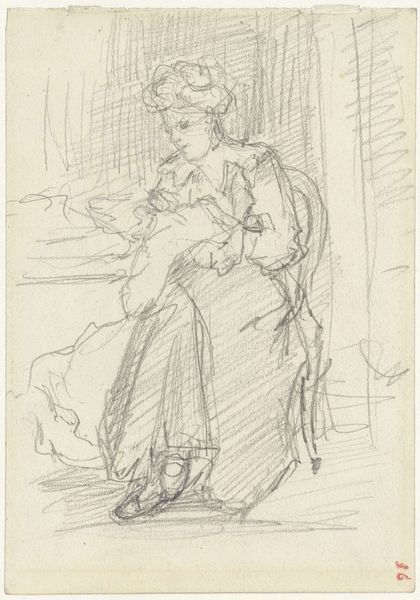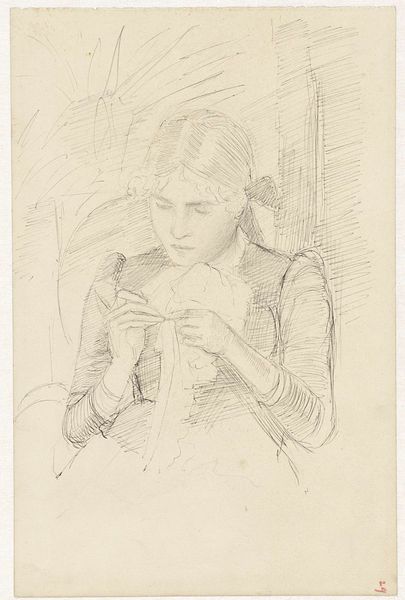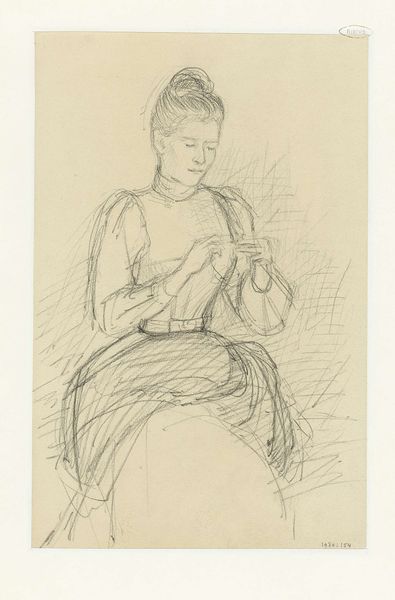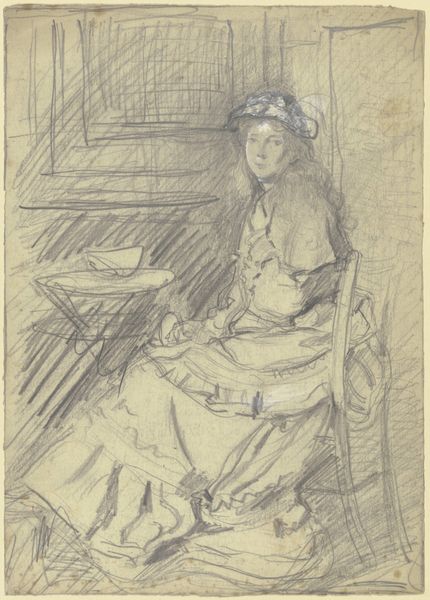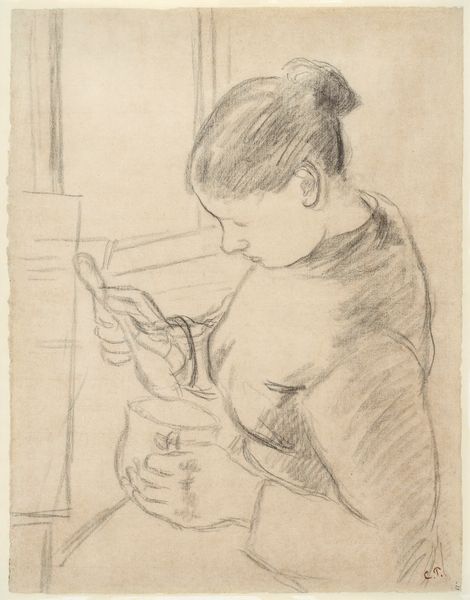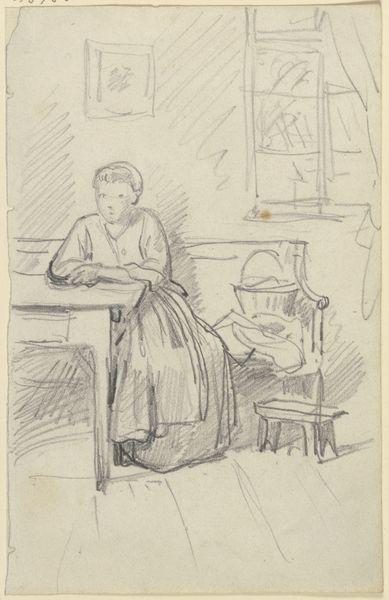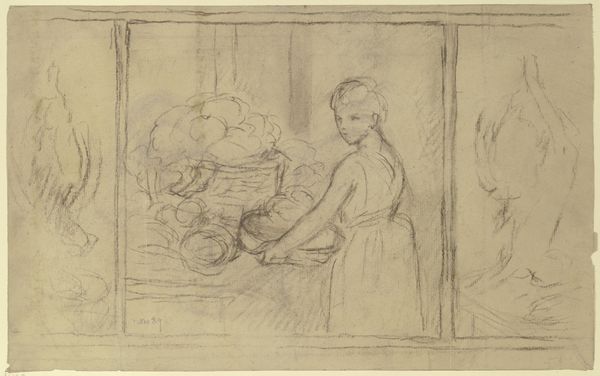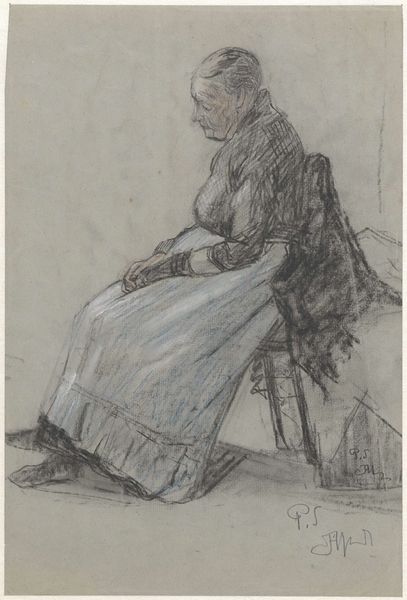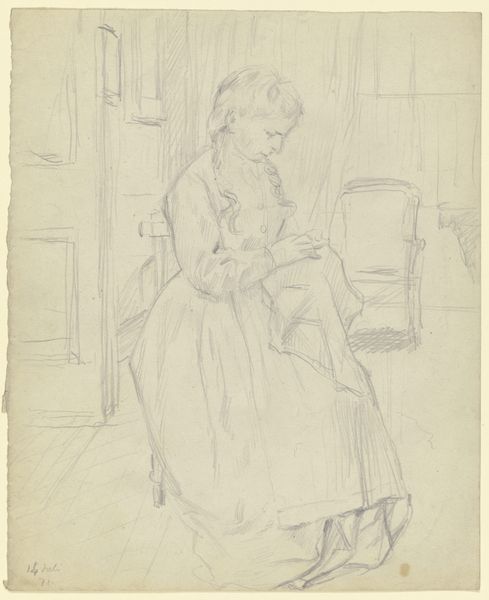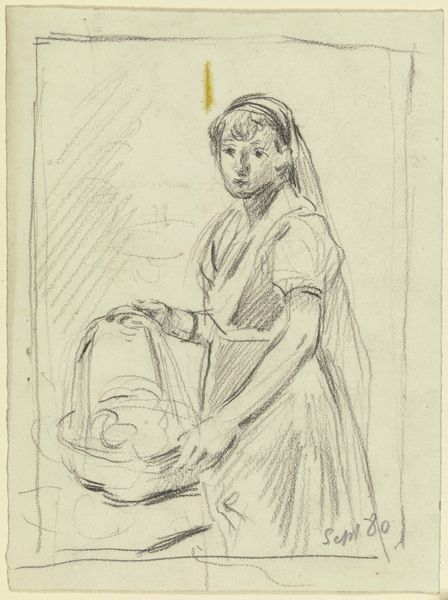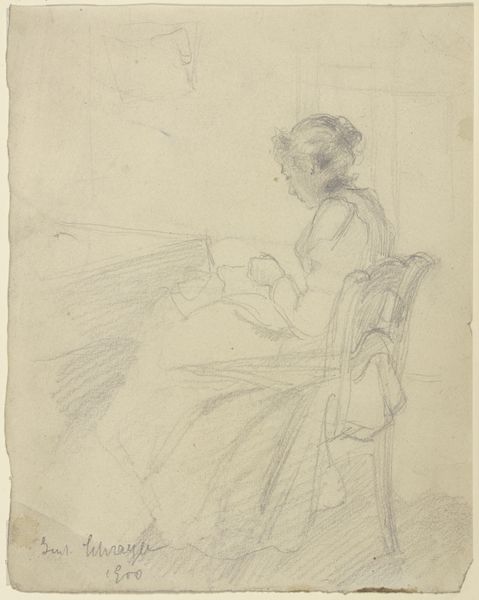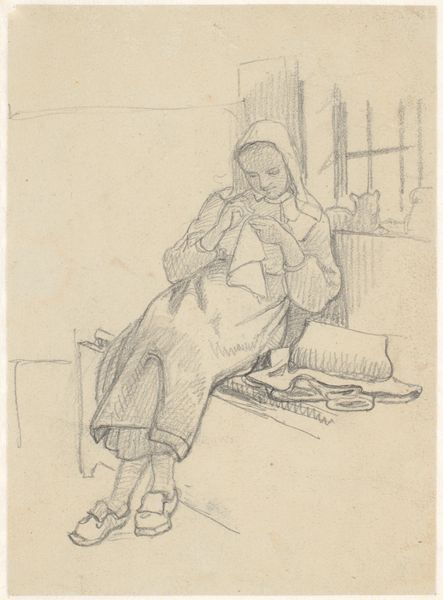
drawing, pencil
#
portrait
#
drawing
#
light pencil work
#
pen sketch
#
pencil sketch
#
figuration
#
personal sketchbook
#
ink drawing experimentation
#
pen-ink sketch
#
pencil
#
sketchbook drawing
#
portrait drawing
#
pencil work
#
genre-painting
#
sketchbook art
#
realism
Dimensions: height 313 mm, width 243 mm
Copyright: Rijks Museum: Open Domain
Editor: So, this is "Spinnende vrouw" by Jozef Israëls, dating from 1834 to 1911, done in pencil and now held at the Rijksmuseum. I’m immediately struck by how intimate and domestic it feels. It’s a very simple drawing of a woman at a spinning wheel. How do you interpret this work? Curator: I see it as a potent visual commentary on the realities of labor, particularly the often invisible work performed by women within the domestic sphere. This piece invites us to consider the social and economic context of the 19th century, and Israëls' place within it. Note the woman's downcast gaze, the cramped composition—does it evoke feelings of confinement and constraint? Editor: Yes, definitely. The sketch-like quality makes it seem almost like a captured moment, not idealized at all. Is that realism influencing how he portrays women? Curator: Absolutely. Realism aimed to depict life as it was, rejecting romanticized visions. Consider the broader feminist implications: are we seeing a critique of the limited opportunities afforded to women, whose lives were often defined by domestic duties? How does this representation challenge or reinforce the era’s prevailing social structures and expectations regarding gender roles and labour? Editor: I see what you mean. It’s not just a woman spinning; it’s a statement about women's work. Thank you, I never considered all those contexts. Curator: And that's the beauty of art, isn't it? It reflects not only the artist's vision, but also the society that shaped them. It shows we need to question, explore, and continuously learn from it.
Comments
No comments
Be the first to comment and join the conversation on the ultimate creative platform.
